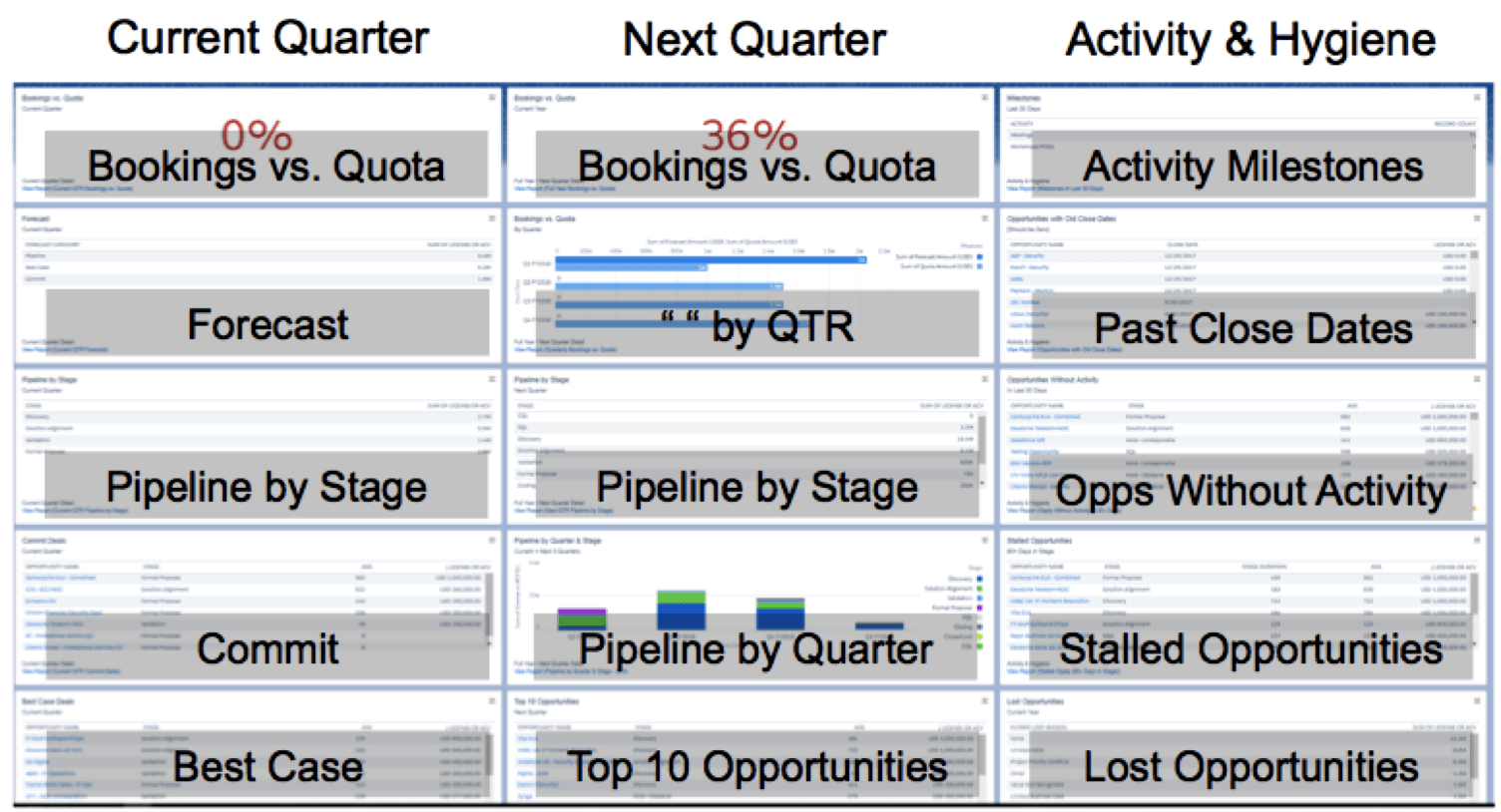Are we focusing on the right KPIs? This is a common question from portfolio companies seeking to calibrate the best methods to measure sales effectiveness.
Sales leaders grapple with identifying KPIs that are insightful, reliable, and appropriate for their sales motion. The wrong KPIs can lead to unpredictability and inconsistency in meeting revenue targets and the plethora of KPI flavors-of-the-week, make it difficult to discern which will be best at delivering prescriptive insights for growing organizations.
In this article, we explore three common headaches we see in measuring KPIs and a simplified best practice framework to help you determine useful sales metrics.
Three Common KPI Headaches
#1: Only Focusing on Outcomes
Many sales organizations measure sellers on non-manageable, outcome-based metrics. However, according to a Harvard Business Review study, only 14% of sales metrics are manageable. Manageable metrics are the controllable tactical activities within a seller’s locus of control. Metrics like the number of calls, the number of emails, the number of qualified leads are manageable; metrics like the number of closed deals or ASP are outcomes metrics, and not manageable to the same degree.
While bottom-line metrics are paramount, manageable metrics are the inputs that generate desired outputs.
#2: Lack of Attention to Future Pipeline
Sales organizations are always focused on closing the current quarter, and metrics incentivize them to do so. They focus on the immediate short-term goal and put off thinking about out-quarter progress. However, a lack of attention to future quarter KPIs could mean inadequate pipeline coverage to meet targets in subsequent quarters.
Keeping a close eye on out-quarter progress helps you stay ahead of potential pipeline coverage issues giving you enough time to implement corrective actions.
#3: Tracking a Disjointed Set of KPIs
Because there is no shortage of sales KPIs, often sales organizations become overwhelmed and implement metrics that are not mutually supportive and cohesive. While you can measure everything, it doesn’t mean that you should.
Rather than continually add the KPI de jour, we recommend thinking about how your metrics work together to tell a story about the state of your overall sales team’s performance, thereby deliveing relevant, useful insights.
Reconstructing Your KPI Framework
The sales leader’s challenge is to track metrics that sellers can manage, focusing on current performance while ensuring insight into future pipeline. Metrics need to tell a cohesive story about the team’s activities in pursuit of near-term and longer-term revenue goals.
Consider the following chart:

The top performing sales organizations in Insight’s portfolio have one thing in common—they drive sellers to focus on results, as well as to focus on leading indicators and activities.
To implement this type of KPI framework, we recommend creating both executive and seller-level dashboards.
Implementing a Revised KPI Framework
Executive-level Dashboard

The objective of the executive-level dashboard is to enable a comprehensive inspection conversation between the executive and front-line manager by providing full visibility at the level of sellers and their activities.
In this example, the left side tracks results, the middle columns track leading indicators, with activities on the right. The purpose of the dashboard is to be both dynamic and prescriptive, making it simple to identify performance, and take corrective action where needed. This can be powered using tools like Excel or Tableau.

Seller-level Dashboard
The seller-level dashboard provides a single source of truth to drive focused behavior. The dashboard provides front-line managers with the information they need to properly inspect seller activity and progress. It also focuses sellers since it enables them to know exactly where they stand versus their goals, across all relevant KPIs. Because this is rep focused, to be effective this dashboard must live in your CRM, where reps spend most of their time.

The seller-level dashboard is arranged left to right by results, leading indicators, and activities, respectively.
Best practices tip: We recommend making this dashboard dynamic so that sales leaders and frontline managers can quickly and easily toggle between reps or whole teams.
Next Steps
You may ask: which KPIs should I track?
We suggest that you categorize your current KPIs into this framework (current Q, next Q, and activities/ hygiene metrics) and determine which metrics fit this construct, and where you have redundancy.
You don’t need to track too many KPIs – you just need to track the right KPIs. By using the framework and dashboards described above, and through holding your sellers accountable to manageable, forward-focused metrics, you’ll be able to drive more predictable revenue, and consistent quota attainment.










